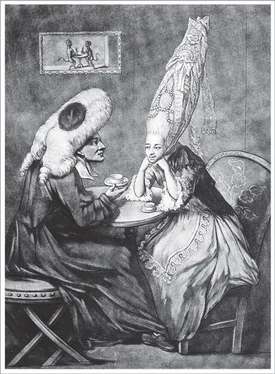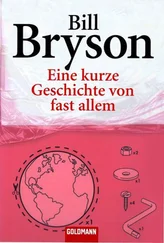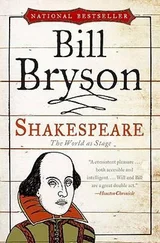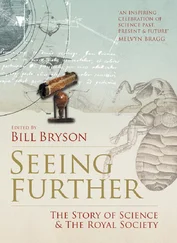Bill Bryson - At Home
Здесь есть возможность читать онлайн «Bill Bryson - At Home» весь текст электронной книги совершенно бесплатно (целиком полную версию без сокращений). В некоторых случаях можно слушать аудио, скачать через торрент в формате fb2 и присутствует краткое содержание. Жанр: Старинная литература, на английском языке. Описание произведения, (предисловие) а так же отзывы посетителей доступны на портале библиотеки ЛибКат.
- Название:At Home
- Автор:
- Жанр:
- Год:неизвестен
- ISBN:нет данных
- Рейтинг книги:4 / 5. Голосов: 1
-
Избранное:Добавить в избранное
- Отзывы:
-
Ваша оценка:
- 80
- 1
- 2
- 3
- 4
- 5
At Home: краткое содержание, описание и аннотация
Предлагаем к чтению аннотацию, описание, краткое содержание или предисловие (зависит от того, что написал сам автор книги «At Home»). Если вы не нашли необходимую информацию о книге — напишите в комментариях, мы постараемся отыскать её.
At Home — читать онлайн бесплатно полную книгу (весь текст) целиком
Ниже представлен текст книги, разбитый по страницам. Система сохранения места последней прочитанной страницы, позволяет с удобством читать онлайн бесплатно книгу «At Home», без необходимости каждый раз заново искать на чём Вы остановились. Поставьте закладку, и сможете в любой момент перейти на страницу, на которой закончили чтение.
Интервал:
Закладка:
Because nightsoil men charged hefty fees, cesspits in poorer districts were seldom emptied and frequently overflowed—not surprisingly given the pressures put on the average inner-city cesspit. Crowding in many London districts was almost unimaginable. In St. Giles, the worst of London’s rookeries—scene of William Hogarth’s famous engraving Gin Lane— fifty-four thousand people crowded into just a few streets. By one count, eleven hundred people lived in twenty-seven houses along one alley; that is more than forty people per dwelling. In Spitalfields, farther east, inspectors found sixty-three people living in a single house. The house had nine beds—one for every seven occupants. A new word, of unknown provenance, sprang into being to describe such neighborhoods: slums . Charles Dickens was one of the first to use it, in a letter of 1851.
Such masses of humanity naturally produced enormous volumes of waste—far more than any system of cesspits could cope with. In one fairly typical report an inspector recorded visiting two houses in St. Giles where the cellars were filled with human waste to a depth of three feet. Outside, the inspector continued, the yard was six inches deep in excrement. Bricks had been stacked like stepping-stones to let the occupants cross the yard.
At Leeds in the 1830s, a survey of the poorer districts found that many streets were “floating with sewage”; one street, housing 176 families, had not been cleaned for fifteen years. In Liverpool, as many as one-sixth of the populace lived in dark cellars, where wastes could all too easily seep in. And of course human waste was only a small part of the enormous heaps of filth that were generated in the crowded and rapidly industrializing cities. In London, the Thames absorbed anything that wasn’t wanted: condemned meat, offal, dead cats and dogs, food waste, industrial waste, human feces, and much more. Animals were marched daily to Smithfield Market to be turned into beefsteaks and mutton chops; they deposited forty thousand tons of dung en route in a typical year. That was, of course, on top of all the waste of dogs, horses, geese, ducks, chickens, and rutting pigs that were kept domestically. Gluemakers, tanners, dyers, tallow chandlers—indeed, chemical enterprises of all sorts—all added their by-products to the sea of daily sludge. Much of this rotting detritus ultimately found its way into the Thames, where the hope was that the tide would carry it out to sea. But of course tides run in both directions, and the tide that carried waste out toward sea brought a good deal of it back when it turned. The river was a perpetual “flood of liquid manure,” as one observer put it. Smollett, writing in Humphry Clinker , said that “human excrement is the least offensive part,” for the river also contained “all the drugs, minerals and poisons, used in mechanics and manufacture, enriched with the putrefying carcases of beasts and men; and mixed with the scourings of all the wash-tubs, kennels, and common sewers.” The Thames grew so noxious that when a tunnel being dug at Rotherhithe sprang a leak, the first matter through the breach was not river water but concentrated gases, which were ignited by the miners’ lamps, putting the miners in the absurdly desperate position of trying to outrun incoming waters and clouds of burning air.
The streams that fed into the Thames were often even worse than the Thames itself. The River Fleet was in 1831 “almost motionless with solidifying filth.” Even the Serpentine in Hyde Park became so progressively putrid that park users stayed upwind of it. In the 1860s, a layer of sewage fifteen feet deep was dredged from the bottom.
Into this morass came something that proved, unexpectedly, to be a disaster: the flush toilet. Flush toilets of a type had been around for some time. The very first was built by John Harington, godson to Queen Elizabeth. When Harington demonstrated his invention to her in 1597, she expressed great delight and had one immediately installed in Richmond Palace. But it was a novelty well ahead of its time, and almost two hundred years passed before Joseph Bramah, a cabinetmaker and locksmith, patented the first modern flush toilet in 1778. It caught on in a modest way. Many others followed. In America in 1801, at the White House—or President’s House, as it was then called—Thomas Jefferson improved on the indoor privies he had installed at Monticello by installing three of the first flushing toilets to be found in the new nation. They were powered by rainwater cisterns in the attic.
But early toilets often didn’t work well. Sometimes they backfired, filling the room with even more of what the horrified owner had very much hoped to be rid of. Until the development of the U-bend and water trap—which create that little reservoir of water that returns to the bottom of the bowl after each flush—every toilet bowl acted as a conduit to the smells of cesspit and sewer. The backwaft of odors, particularly in hot weather, could be unbearable.
This problem was resolved by one of the great and surely most extraordinarily appropriate names in hygiene history, Thomas Crapper (1837–1910), who was born into a poor family in Yorkshire and reputedly walked to London at the age of eleven. There he became an apprentice plumber in Chelsea. Crapper invented the classic and, in Britain, still familiar toilet with an elevated cistern activated by the pull of a chain. Called the Marlboro Silent Water Waste Preventer, it was clean, leak-proof, odor-free, and wonderfully reliable, and its manufacture made Crapper very rich and so famous that it is often assumed that he gave his name to the slang term crap and its many derivatives. In fact, crap in the lavatorial sense is very ancient, and crapper for a toilet is an Americanism not recorded by the Oxford English Dictionary before 1922. Crapper’s name, it seems, was just a happy coincidence.
The breakthrough event for flush toilets was the Great Exhibition, where they became one of the featured attractions. More than eight hundred thousand people patiently endured long queues to experience the flush toilets—a novelty for most of them—and were so enchanted by the noise and cleansing swirl of water that they rushed to have them installed in their own homes. Perhaps no expensive consumer item in history has taken off more quickly. By the mid-1850s, some two hundred thousand of them were working away in London.
The problem was that London’s sewers were designed only to drain off rain water and couldn’t cope with a steady deluge of solid waste. The sewers filled up with a dense, gloopy sludge that wouldn’t wash away. People known as flushermen were employed to find blockages and clear them. Other sewery professions included toshers and mudlarks, who delved through muck, in sewers and along fetid riverbanks, for lost jewelry or the odd silver spoon. Toshers made a good living, all things considered, but it was dangerous work. The air in the sewers could be lethal. Since the sewer network was vast and unrecorded, reports abounded of toshers getting lost and failing to find their way out. Many were rumored to have been attacked and devoured by armies of rats.
Murderous epidemics were routine in the lightly sanitized, pre-antibiotic world. The cholera outbreak of 1832 left an estimated sixty thousand Britons dead. It was followed by a devastating influenza epidemic in 1837–38 and further cholera outbreaks in 1848, 1854, and 1867. Between and amid these attacks on the nation’s tranquillity came deadly bursts of typhoid fever, rheumatic fever, scarlet fever, diphtheria, and smallpox, among many others. Typhoid fever alone killed fifteen hundred people or more a year from 1850 to 1870. Whooping cough killed about ten thousand children a year from 1840 to 1910. Measles killed even more. There were, in short, an awful lot of ways to die in the nineteenth century.
Читать дальшеИнтервал:
Закладка:
Похожие книги на «At Home»
Представляем Вашему вниманию похожие книги на «At Home» списком для выбора. Мы отобрали схожую по названию и смыслу литературу в надежде предоставить читателям больше вариантов отыскать новые, интересные, ещё непрочитанные произведения.
Обсуждение, отзывы о книге «At Home» и просто собственные мнения читателей. Оставьте ваши комментарии, напишите, что Вы думаете о произведении, его смысле или главных героях. Укажите что конкретно понравилось, а что нет, и почему Вы так считаете.












